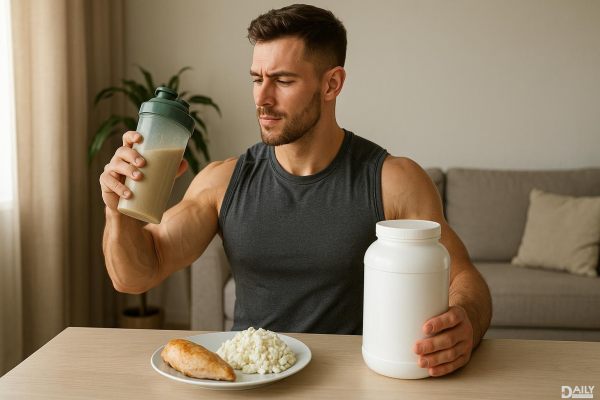If you’re serious about building muscle, you’ve probably heard the golden rule: aim for 1 gram of protein per pound of body weight. But why is this number thrown around so much, and does it actually work? The short answer is yes—it’s a solid benchmark for muscle growth. Protein is the building block of muscle tissue, and without enough of it, your gains will hit a wall. But let’s break it down further so you can understand why this magic number matters and how to make it work for you.

Protein isn’t just a buzzword in the fitness world—it’s essential. When you work out, especially during strength training, you create tiny tears in your muscle fibers. Protein steps in to repair and rebuild these fibers, making them stronger and bigger over time. This process is called muscle protein synthesis, and it’s the key to building muscle. But here’s the catch: your body needs a steady supply of protein to keep this process going. If you’re not eating enough, your muscles won’t have the raw materials they need to grow. That’s where the 1-gram-per-pound rule comes in. It ensures you’re giving your body enough protein to maximize muscle repair and growth.
You might be wondering, “Why not 0.8 grams or 1.2 grams?” The 1-gram-per-pound rule is a simplified guideline based on research and practical experience. Studies show that consuming around 0.7 to 1 gram of protein per pound of body weight is optimal for muscle growth. The 1-gram mark is easy to remember and provides a slight buffer to ensure you’re covering your bases. For example, if you weigh 180 pounds, aiming for 180 grams of protein daily keeps you in the sweet spot for muscle-building. It’s not an exact science, but it’s a reliable starting point for most people.
It’s not just about how much protein you eat—it’s also about when you eat it. Your body can only use so much protein at once, so spreading your intake throughout the day is crucial. Aim to include a source of protein in every meal and snack. Post-workout is especially important because your muscles are primed to absorb nutrients. A protein-rich meal or shake within 30 to 60 minutes after your workout can kickstart the recovery process. But don’t neglect the rest of the day—consistent protein intake keeps muscle protein synthesis humming along.
Not all protein is created equal. While hitting your daily target is important, the quality of your protein sources matters just as much. Complete proteins, which contain all nine essential amino acids, are your best bet. Think lean meats like chicken, turkey, and fish, as well as eggs, dairy, and plant-based options like quinoa and soy. If you’re relying on protein supplements, look for high-quality whey or plant-based powders. Avoid processed meats and low-quality protein bars that are packed with fillers and added sugars. Your muscles deserve the good stuff.
There’s a lot of misinformation out there about protein, so let’s clear up a few myths. First, eating more protein than the recommended amount won’t necessarily lead to more muscle growth. Once you’ve hit your target, excess protein is either burned for energy or stored as fat. Second, protein isn’t just for bodybuilders—it’s essential for anyone looking to improve their physique, whether you’re lifting weights or doing yoga. Finally, don’t worry about protein damaging your kidneys unless you have a pre-existing condition. For healthy individuals, a high-protein diet is safe and effective.
Hitting 1 gram of protein per pound of body weight might sound daunting, but with a little planning, it’s totally doable. Start by tracking your current intake to see where you stand. Then, incorporate protein-rich foods into every meal. Breakfast could include eggs or Greek yogurt, lunch might feature grilled chicken or tofu, and dinner could be a hearty serving of salmon or steak. Snacks like cottage cheese, protein bars, or a handful of nuts can help you bridge the gap. If you’re struggling to meet your target, a protein shake can be a convenient way to boost your intake.
While the 1-gram-per-pound rule is a great starting point, it’s not one-size-fits-all. If you’re highly active or trying to lose fat while preserving muscle, you might need to bump up your intake slightly. On the flip side, if you’re more sedentary or focusing on maintenance, you could get away with a bit less. Listen to your body and adjust based on how you feel and perform. Remember, nutrition is personal, and what works for someone else might not work for you.
Building muscle isn’t just about lifting heavy weights—it’s about fueling your body with the right nutrients. The 1-gram-per-pound rule is a tried-and-true guideline that ensures you’re giving your muscles the protein they need to grow. Combine this with consistent training, proper rest, and a balanced diet, and you’ll be well on your way to achieving your fitness goals. So, grab that chicken breast, fire up the grill, and start building the body you’ve always wanted.
























